Ever wondered why Korean restaurants serve you free Korean vegetable dishes before you get to the main course? Even at Korean BBQ restaurants, all orders come with a side of kimchi, assorted Korean vegetables, and pickled cucumber or zucchini before your min dish arrives.
These typical Korean vegetables also play an important role when you make ssam (also known as Korean veggie meat wraps). These traditional side dishes are called banchan, and they’re a large part of what makes a Korean dining experience unique.
For Koreans, the point of having these varied vegetables in your diet is to guarantee variety and upgrade an ordinary meal. In this article we introduce you to over a dozen traditional Korean vegetables, the many ways they're used, and the most common Korean side dishes made with each one.
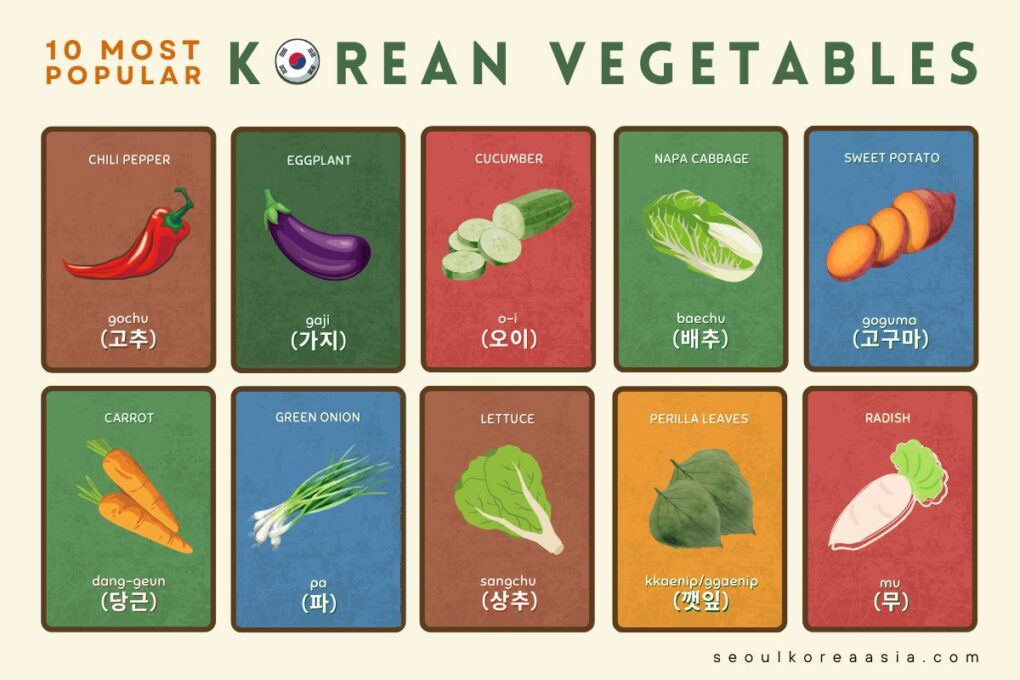
Jump to:
🥗 Korean Vegetables & Korean Side Dishes
The relationship Koreans have with vegetables go a long way back. Centuries ago, Korea embraced Buddhism, which values animal life and in turn discourages the consumption of meat. This is why if you visit traditional hanoks, the temple food will always be vegetable dishes.
Temples in the past also gathered wild roots, stems, leaves, fruits, and flowers, and used these not only in their dishes, but also to make various Korean teas. You can still try many of these nowadays in traditional teahouses throughout the Insadong neighborhood of Seoul.
Years later, after the Korean War, the country had a hard time getting meat since most animals were for labor support, and the influence of Buddhism was still strong. Whenever people had access to meat (thanks to stolen goods from US military bases), they had to ration it to make the supply last longer.
During this tough time, Korean wives had to become experimental when it came to vegetable-and-meat dishes, and in doing so, came up with fascinating ways to make plant-dominant dishes taste like anything but greens.
Nowadays, it’s common to see vegetables accompanying any main dish; they even serve them in places you wouldn’t expect (like PC bangs). South Korean vegetables are a necessity, and it shows in the way they have allocated the little arable land they have for farming to prioritize vegetables instead of fruits.
Most of the crops sold in markets are grown by young Seoullites who left the capital to embrace the rural farming life (see kwichon).
While most of the crops Korean farmers grow are napa cabbages, onions, sweet potatoes, cucumber, and soybeans, Korea is also known for producing high quality ginseng, a root vegetable used as a health supplement perfect for all ages.
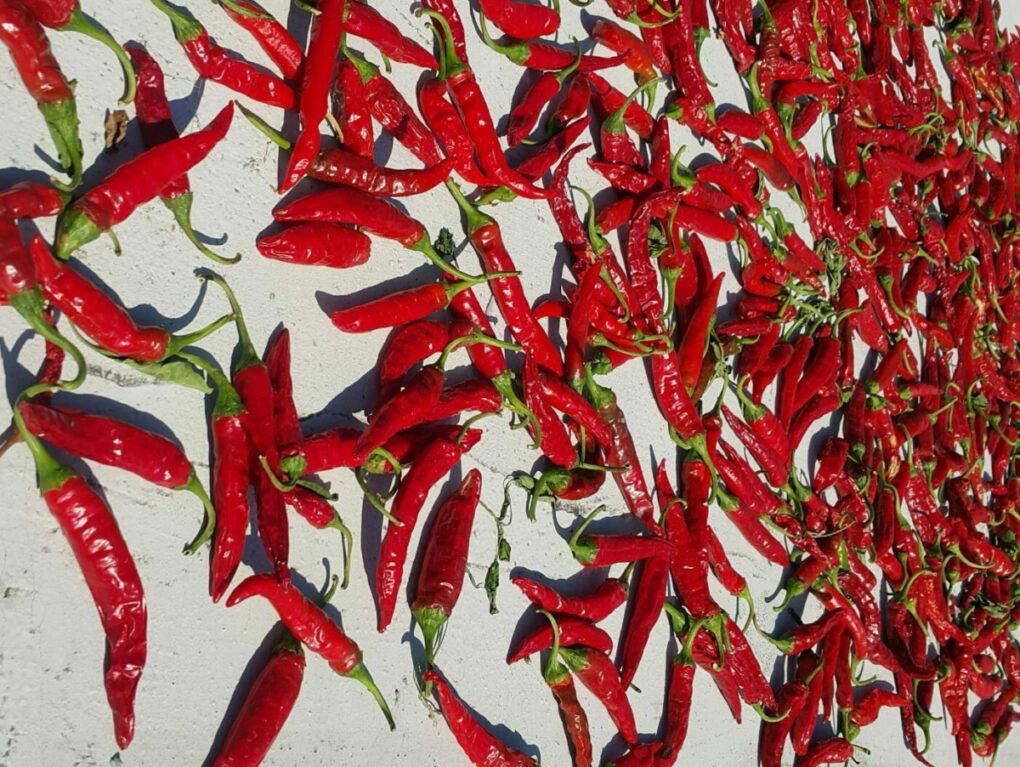
19 Korean Vegetables + Recipes
Hot Pepper (gochu, 고추)
Korea is notorious for its spicy food. This is thanks to their undeniable love for foods that make your tongue hurt – but for a good reason. Gochu has tons of health benefits, including increasing metabolism and increasing pain tolerance.
What people don’t know is that there are multiple versions of this South Korean vegetable: put gochu (young green peppers) and hong gochu (mature red peppers). The latter is dried and ground to make the hot pepper powder called “gochugaru,” which is typically used to flavor kimchi and gochujang sauce.
On the other hand, put gochu are the ideal kind of peppers to turn into jangajji (hot Korean pickles). Try gochu-jangajji, a dish made with young green chilli peppers.
Green Onion (pa, 파)
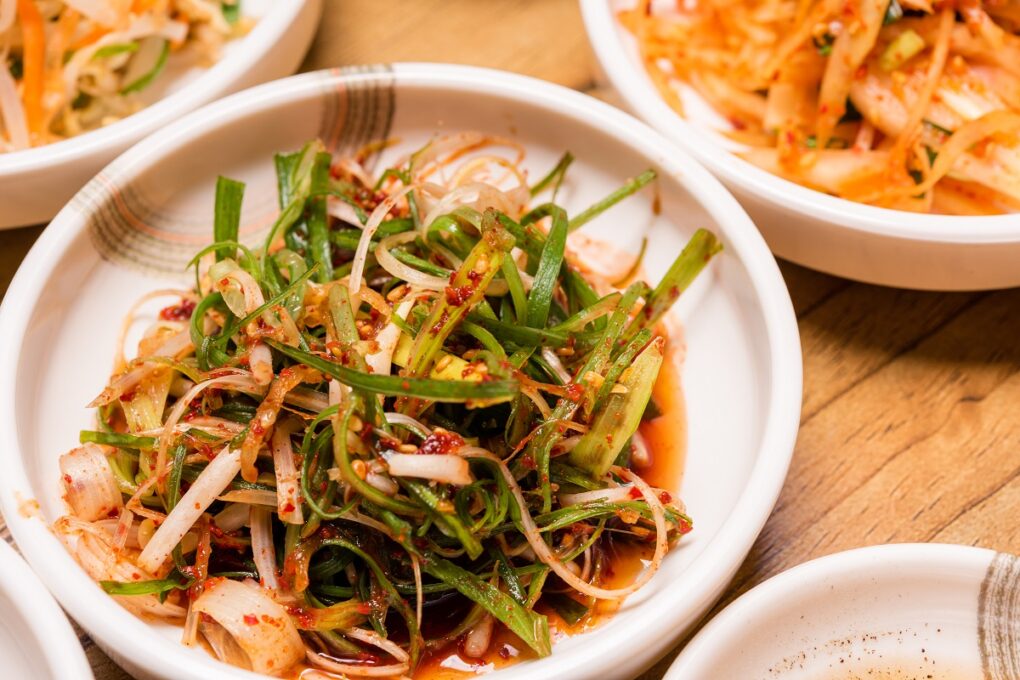
Sometimes referred to as “Korean leeks,” these large green onions are less thick compared to the ones sold in American markets. Don’t underestimate these stalks, though. These green onions hold a stronger taste compared to the average, and are perfect for Korean vegetable side dishes like Galbitang and Seolleongtang. Try seolleongtang made with green onions.
Cucumber (Oi, 오이)
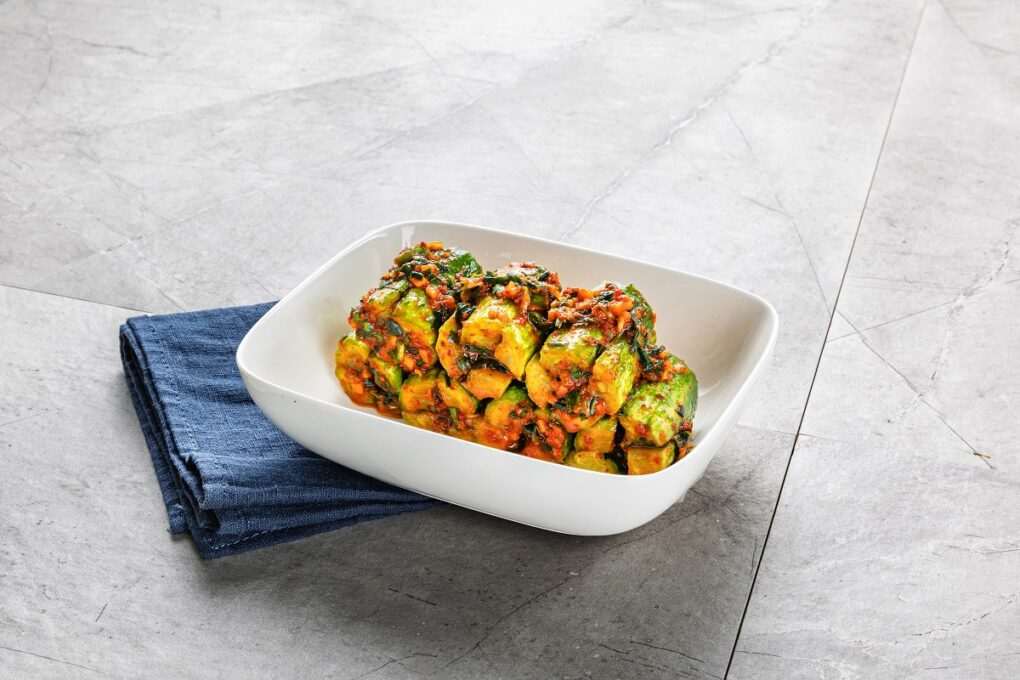
Cucumbers from Korea are known to be super crunchy and juicy. There are plenty of varieties like Gashi Oi (가시오이) and Cheong Oi (청오이), but Baekdadagi (백다다기) is the preferred version most often seen in markets like Tongin Market. Unlike the first two, Baekdadagi does not quickly rot and is large enough to make a full dish.
Baekdadagi can be eaten raw, but is usually stir-fried or pickled. There is even a kimchi version of this Korean vegetable dish. Perfect for palate-cleansing, a dish of oi is unbeatable in the summertime, thanks to its refreshing taste.
Sometimes locals dip these in salt, sugar, or gochugaru to add more flavor to the crunch, much like Americans love dipping celery sticks in ranch. You can also try making oi muchim (spicy cucumber salad) that goes well with savory Korean dishes like haemul pajeon (seafood pancake) or maeuntang (spicy fish stew). Try oi kimchi made with cucumber.
Soybean Sprouts (kongnamul, 콩나물)
Kongnamul has been a staple in Korean households, dating all the way back to the Joseon period. Cooking methods for these sprouts have even been featured in traditional documents like the Sallim gyeongje and the Literary Miscellany of Seongho.
Kongnamul are the nutty and crunchy bits added to your bibimbap, usually seasoned with gochugaru and soy sauce to enhance flavor. Be careful if you try making dishes with these, however, since these are quite sensitive if exposed to air while boiling, and can make the room smell quite bad.
Overcooking may also ruin the taste and its crunch, so always be mindful while preparing a dish using kongnamul. Try kongnamul bap made with soybean sprouts.
Napa Cabbage (baechu, 배추)
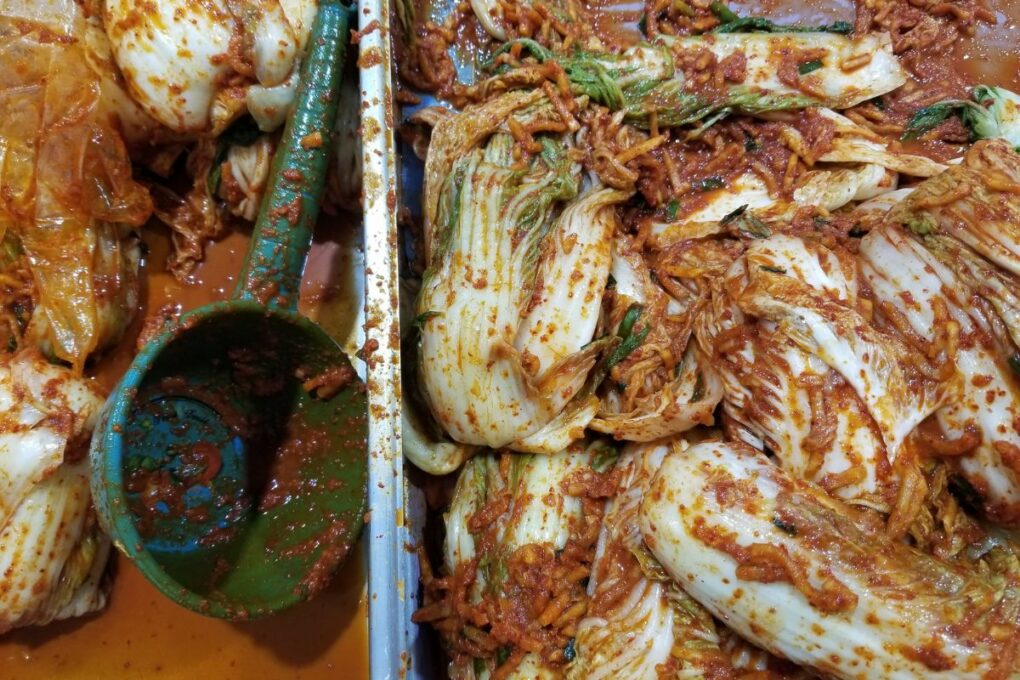
These mild and slightly sweet cabbages are essential for kimchi, but are is also used in a lot of recipes like shabu-shabu hot pots, hangover soup, or ssam for KBBQ. Locals use napa cabbage so much that this vegetable ranked third in the recent list of Korea’s top crop production. Try ppyeo-haejangguk (ox bone hangover soup) made with napa cabbage.
Eggplant (gaji, 가지)
I used to think eggplants tasted off, but for some reason, living in Korea has made me try eggplant in so many different forms that now I even find it mildly pleasant. Perhaps it’s because it is thinner than regular eggplants, but the skin is quite thick, too, which makes the crunch even more satisfying. Add a sprinkle of gochugaru for a much-needed kick. Try gaji namul made with eggplant.
Seaweed (miyeok, 미역)
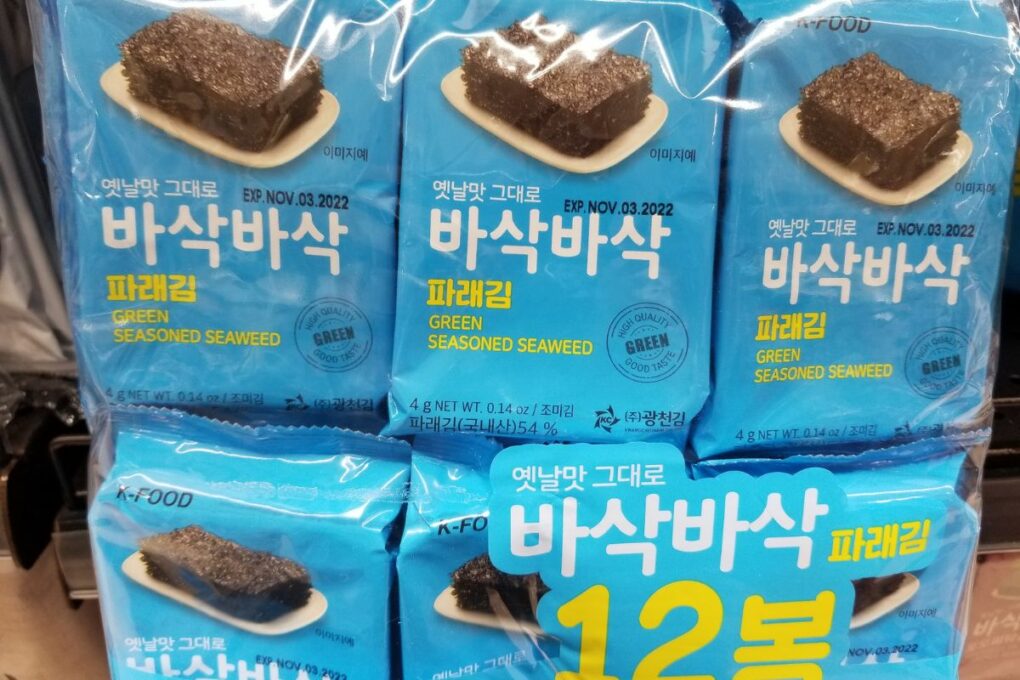
Typically used to greet Koreans on their birthday (miyeok-guk), seaweed is often used to provide a distinctively strong flavor in soup. Dried seaweed, on the other hand, is used to wrap gimbap, also known as the “Korean sushi.” The two types of seaweed even have different names in Korean, lending further credence to their distinct roles in Korean cuisine.
Fun fact: You may not find this as appealing, but Koreans also consider roasted seaweed to be quite a healthy snack. Try miyeok-guk made with seaweed.
Spinach (sigeumchi, 시금치)
Korean spinach dishes like sigeumchi-namul (spinach salad) may be a bit strong for some, but it is the go-to side dish when enjoying doenjang-jjigae (fermented soybean paste stew) or any other kind of traditional Korean stew.
Additionally, since it’s easy to make, expect this to be served whenever you visit a Korean home for dinner. Try doenjang-jjigae made with spinach.
Squash (hobak, 호박 )
Korean squash is a delightful treat if you are a big fan of sweet things. In Korea, locals love adding it to ssam whenever they are out for KBBQ, or to pan-fry it with beef before putting it on top of rice (hobak sogogi deopbap).
Less sweet varieties of squash like aehobak are usually used in dumplings, and put hobak is often made into a jjigae. Try hobak sogogi deopbap made with squash.
Ginseng (wild: sansam, 산삼; cultivated: insam, 인삼)
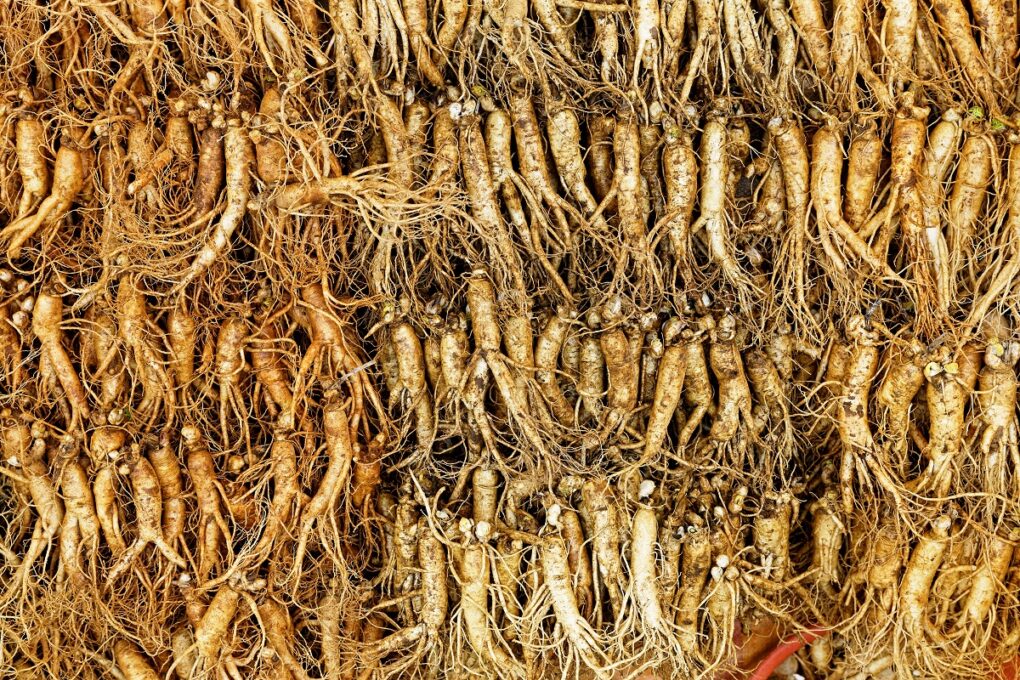
Ginseng is like the Korean medicine holy grail. Even though it’s extremely bitter, locals tolerate it for its numerous health benefits, and allude to it as the reason why their elderly are full of vitality. Even the ahjussis and ahjummas typically have a bottle full of ginseng extract before hiking in any of the numerous free trails in Seoul.
Wild ginseng (sansam) is already a scarce resource, which is why it can get really expensive to buy. The affordable ones are the insam, which are less-expensive versions of ginseng cultivated on mountains instead of being gathered naturally.
On summer days, it is recommended to try ginseng chicken soup (samgyetang) to balance your body heat with the sweltering weather. It’s a strange concept, but it eerily works. Try samgyetang with ginseng.
Korean Radish (mu, 무 or joseon mu, 조선무)
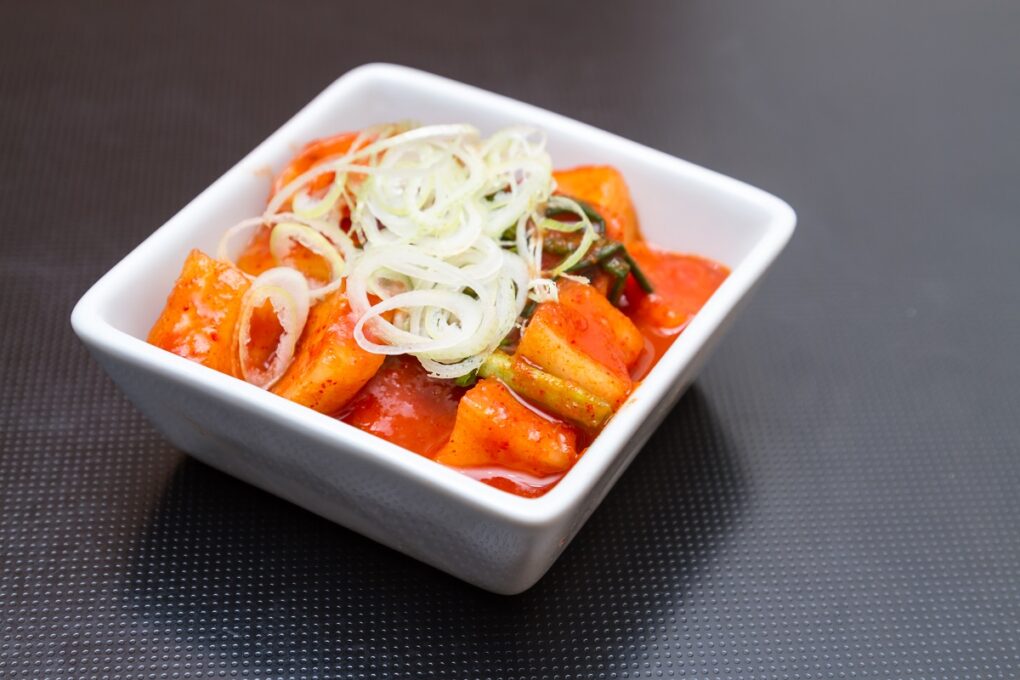
For some reason, locals always pair Korean radish cubes (danmuji) with chicken instead of gravy. It’s the perfect mix of sweet, sour, and salty, and its brine can even be used as a sauce to dip other fried dishes in.
You can also mix Korean radish with kimchi to make it a bit sweeter, or put it in chicken, beef, or pork soup along with guk ganjang (a form of Korean soy sauce). Try musaengchae made with Korean radish.
Turnip (sunmu, 순무뿌리)
Turnips, sometimes referred to as “Korean bunching onions,” are not always the first choice ingredient for cooking, and are almost always used to replace radishes because of their similar flavor.
In fact, if you try searching for a particular Korean recipe that serves turnips as the main dish, you’ll often find recipes for radishes instead. However, there’s a recipe for soegogi miguk (beef radish soup) using turnips that taste just as comforting on days you’re sick. Try soegogi miguk made with turnips.
Potato (gamja, 감자)

Potatoes can taste a bit boring if eaten without any kind of sauce, so this Korean vegetable is almost always served doused in soy sauce, honey, rice syrup, and/or gochugaru. It’s also usually served with other veggies or used to complement a meat dish.
Koreans even have their own version of potato chips served on skewers called “tornado potato.” Try gamja bokkeum made with potato.
Sweet Potato (goguma, 고구마)
Did you know that there are vegetables in Korea that double as snacks? Locals love roasting this veg in a large, cylindrical roaster whenever the winter rolls in (gungoguma). You can usually spot these vendors in the local markets, but they also used to roam the streets before the convenience stores took over the snack market. Try goguma made with sweet potato.
Onion (yangpa, 양파)
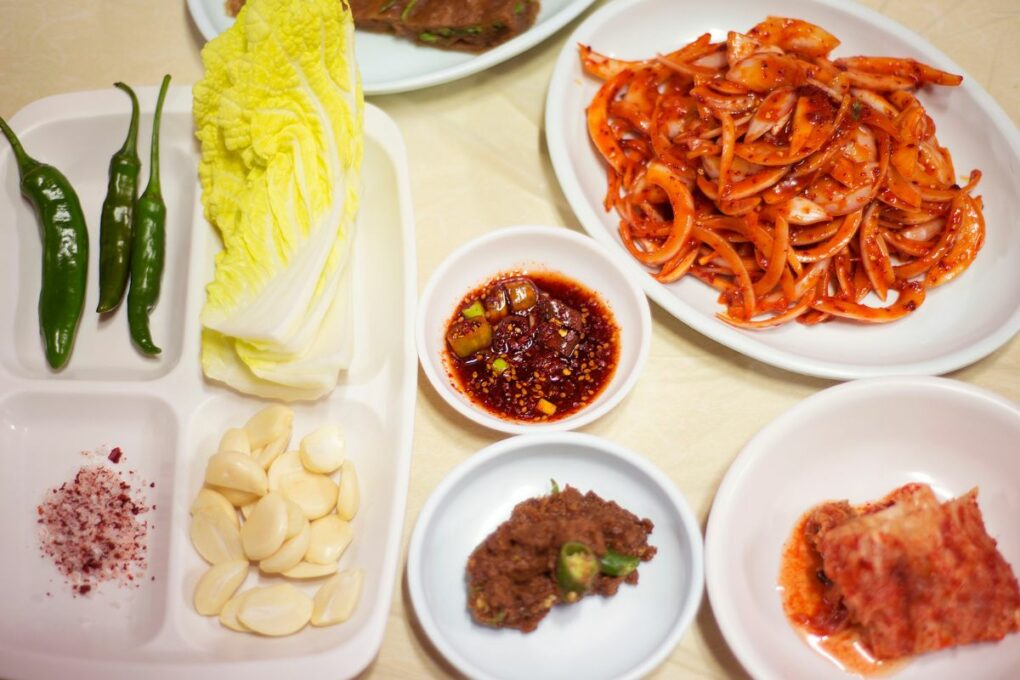
Onions are mostly enjoyed in rural areas of Korea, usually cut and put in a small bowl with equal amounts of soy sauce, sugar, rice wine, vinegar, and water. You should try this easy ban chan with KBBQ, because it makes the umami taste of grilled meat even stronger.
This is also a central ingredient in pajeon (green onion pancake), which is a filling dish that works quite well as a snack. Try pajeon made with onion.
Garlic (maneul, 마늘)
Koreans love garlic so much that they generally put loads on the KBBQ grill before cooking their meat, or even cook it in oil in a little aluminum cup on the grill. There is also a garlic ban chan called maneul changachi, which is marinated for three weeks in rice wine vinegar, sugar, and soy sauce.
Garlic is also a crowd favorite when it comes to chicken (dakgalbi), because it’s satisfying when pairing it with maekju. Try dakgangjeong made with garlic.
Perilla Leaves (kkaenip, 깻잎)
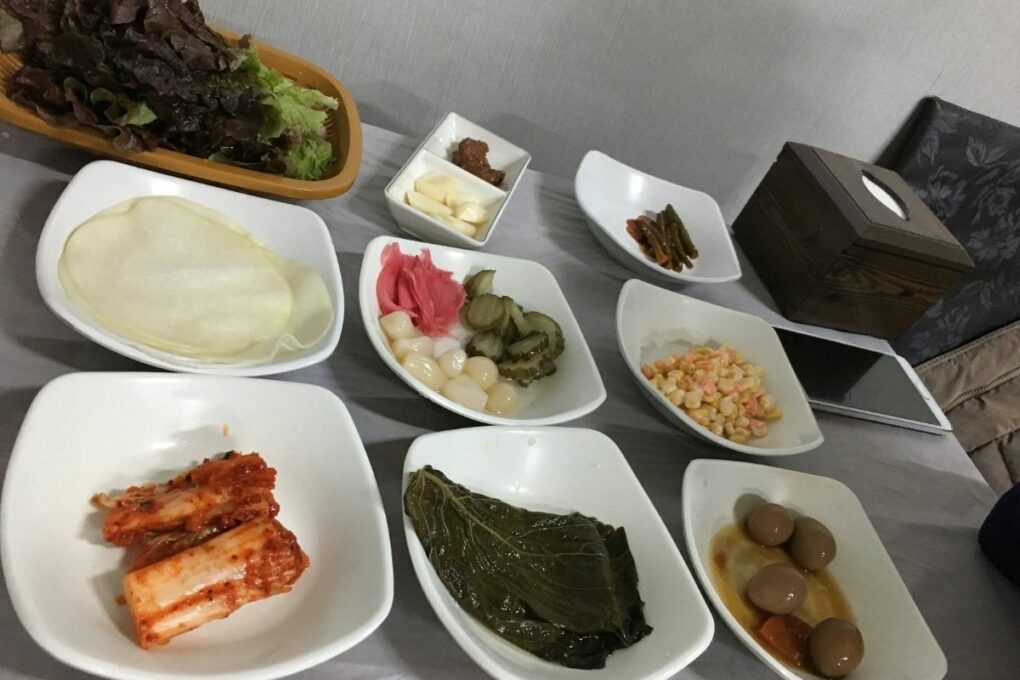
These licorice-flavored leaves pack quite a punch. In fact, Koreans have an obsession with this leaf and often praise it for its unique scent, and usually request more if they are out of it at KBBQ. It’s quite strong, so those who are not prepared may find it to be an acquired taste.
People also value perilla seed powder (deulkkae karu) and the perilla seed oil (deulgireum) for its savory, herbal taste that you can’t get anywhere else. Try gamjatang made with perilla.
Carrots (danggeun, 당근)
Carrots are a must in bibimbap, also known as a mixed Korean rice bowl. But there is actually a special, little-known characteristic of this fresh and light vegetable. In the early 1900s, Koreans who lived in post-Soviet countries lacked access to the baechu cabbage.
In response, they figured out a way to make Kimchi from finely julienned carrots (morkovcha). This tastes best if mashed between meat and lettuce, and is a pleasant addition to bulgogi rice. Try morkovcha made with carrots.
Lettuce (sangchu, 상추)
Red leaf lettuce may be a common thing to see in KBBQ restaurants, but there is also a quick and easy geotjeori (fresh salad) that tastes divine with doenjang-jjigae. This is called sangchu geotjeori, a bite-sized ban chan mixed with garlic, onion, soy sauce, fish sauce, sugar, vinegar, sesame oil and hot pepper flakes.
Even if you’re a newbie in the cooking game, this is an impressive Korean side dish that can upgrade your next breakfast salad. Try sangchu geotjeori made with lettuce.
🙋🏼♀️ Frequently Asked Questions
Popular Korean vegetables include napa cabbage, Korean radish, perilla leaves, spinach, bean sprouts, green onions, and Korean chili peppers. These vegetables are commonly used in Korean cuisine to create a wide variety of dishes, including kimchi, soups, stews, and side dishes. Additionally, Korean cuisine often features a range of root vegetables such as potatoes, sweet potatoes, and carrots, as well as a variety of mushrooms like shiitake and oyster mushrooms.
Yes, Koreans typically consume a significant amount of vegetables as part of their daily diet. Vegetables play a prominent role in Korean cuisine, and a wide variety of vegetables are used in traditional Korean dishes such as kimchi, soups, stews, and side dishes. The emphasis on vegetables reflects the health-conscious nature of Korean culinary traditions and the importance of a balanced and nutritious diet.
Common Korean side dishes, known as banchan, include kimchi (fermented vegetables), namul (seasoned vegetables), japchae (stir-fried glass noodles), kongnamul (seasoned soybean sprouts), and gamja jorim (braised potatoes). Other popular banchan dishes include pickled radish, spinach, cucumber, and various types of jeon (savory pancakes). These side dishes are served alongside rice and main dishes as part of a traditional Korean meal.
Banchan refers to a variety of small dishes served alongside rice and main dishes in Korean cuisine. These side dishes can include a wide range of items such as kimchi (fermented vegetables), namul (seasoned vegetables), jeon (savory pancakes), jorim (braised dishes), and much more. Banchan are meant to complement the main meal, providing diverse flavors, textures, and nutritional elements to create a balanced and satisfying dining experience. This tradition of serving banchan reflects the communal and sharing-oriented nature of Korean dining culture.
In Korean cuisine, side dishes, known as banchan, are not typically considered appetizers in the Western sense. Instead, they are served alongside the main course and rice as part of a traditional Korean meal. Banchan are meant to complement the flavors and textures of the main dishes, and they are enjoyed throughout the meal rather than solely at the beginning. The variety of banchan provides a balanced and diverse dining experience, with different flavors and nutritional elements enhancing the overall meal.
Korean side dishes, known as banchan, are often healthy as they commonly include a variety of vegetables, fermented foods, and other nutritious ingredients. Many banchan dishes are low in fat and calories, and they provide essential vitamins, minerals, and dietary fiber. For example, kimchi, a popular banchan, is a fermented vegetable dish that offers probiotics and is rich in vitamins A and C. Similarly, namul dishes, made from seasoned vegetables, are often low in fat and high in nutrients. While some banchan may be seasoned with ingredients like soy sauce or chili paste, which can add sodium or spice, overall, Korean side dishes can contribute to a well-rounded and healthful meal when consumed in moderation.
Koreans love side dishes, known as banchan, because they add variety, flavor, and nutrition to a meal. The assortment of banchan served alongside the main dishes allows for a diverse dining experience, offering different tastes, textures, and colors. This tradition also reflects the communal aspect of Korean dining, as sharing and enjoying a wide array of side dishes with others is a central part of the dining culture. Additionally, banchan provides an opportunity to incorporate a range of vegetables and fermented foods into the meal, contributing to a balanced and healthy diet.
📖 Recipe
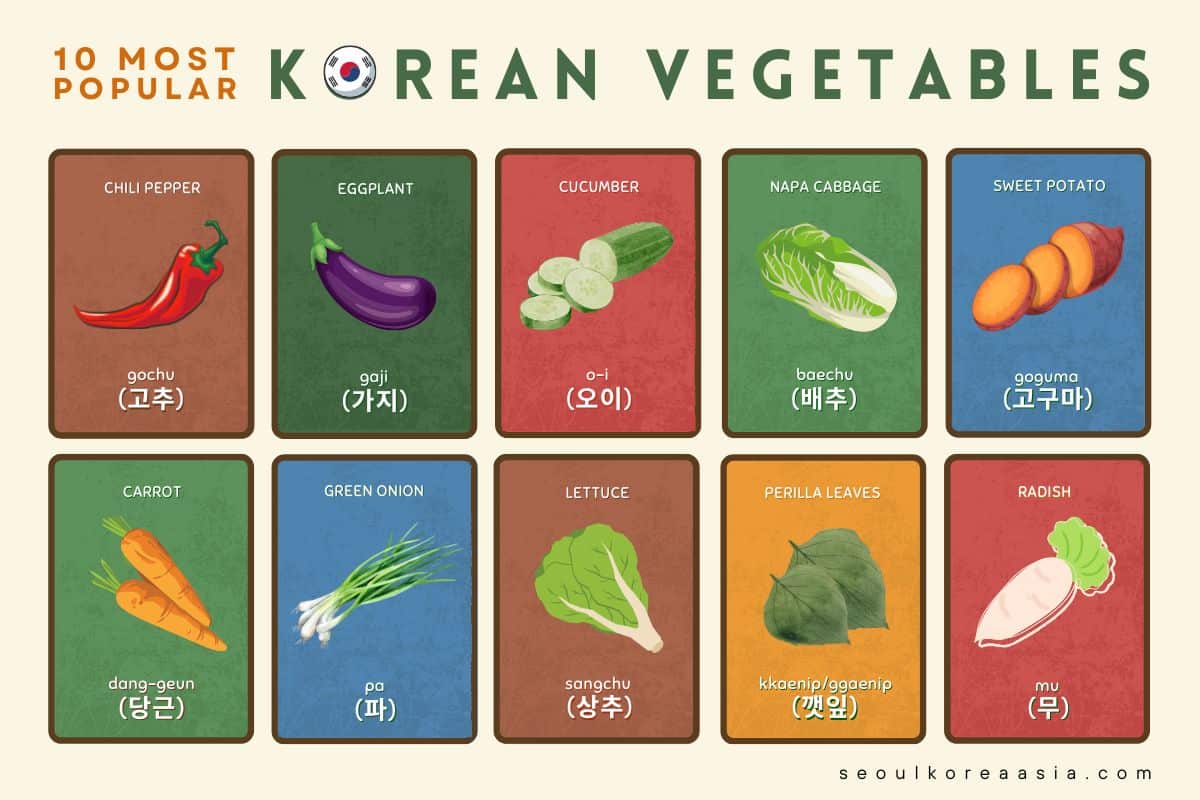
19 Korean Side Dishes
Equipment
- Knife
- Chopping Board
- Whisk
- Spatula
- Mixing Bowl
- Pot
- Pan
Ingredients
- Hot pepper or gochu: gochu jangajji
- Green onion or pa: seolleongtang
- Soybean sprouts or kongnamul: kongnamul bap
- Napa cabbage or baechu: ppyeo haejangguk
- Eggplant or gaji: gaji namul
- Seaweed or miyeok: miyeok guk
- Spinach or sigeumchi: doenjang jjigae
- Squash or hobak: hobak sogogi deopbap
- Ginseng: samgyetang
- Korean radish or mu: musaengchae
- Turnip or sunmu: soegogi miguk
- Potaot or gamja: gamja bokkeum
- Sweet potato or goguma
- Garlic or maneul: dakgangjeong
- Carrots or danggeun: morkovcha
- Lettuce or sangchu: sangchu geotjeori
Instructions
- Choose a recipe that appeals to you.
- Gather the ingredients.
- Follow the instructions, then enjoy!





Comments
No Comments